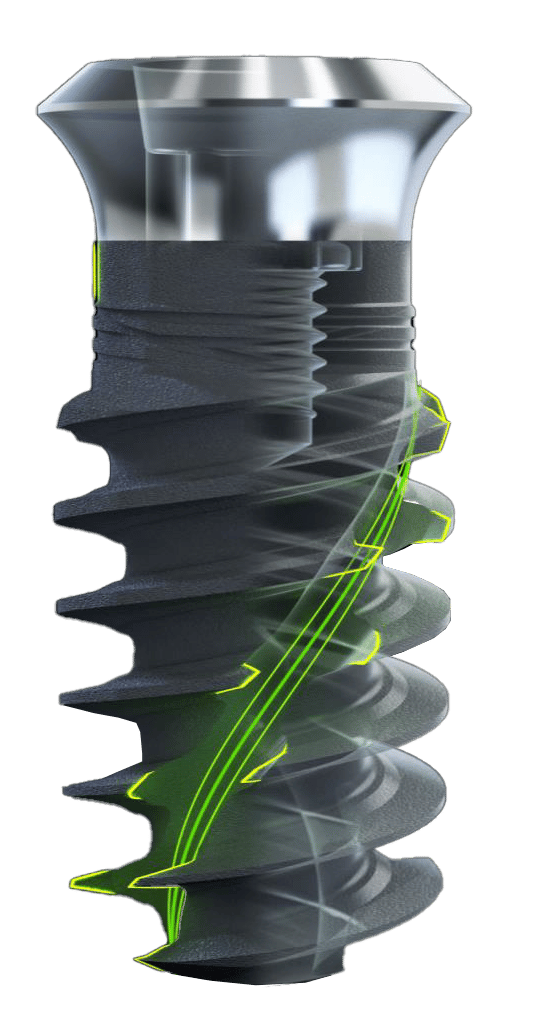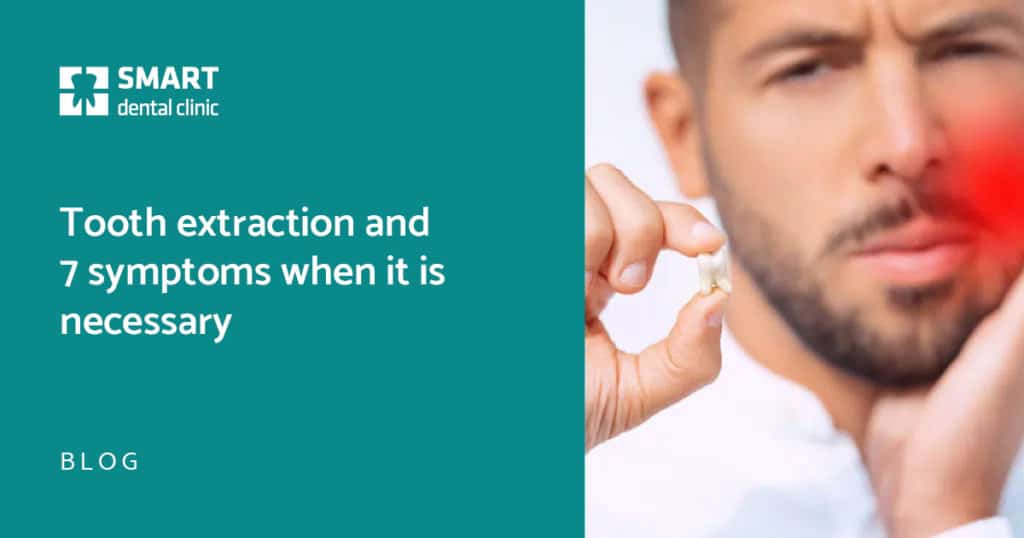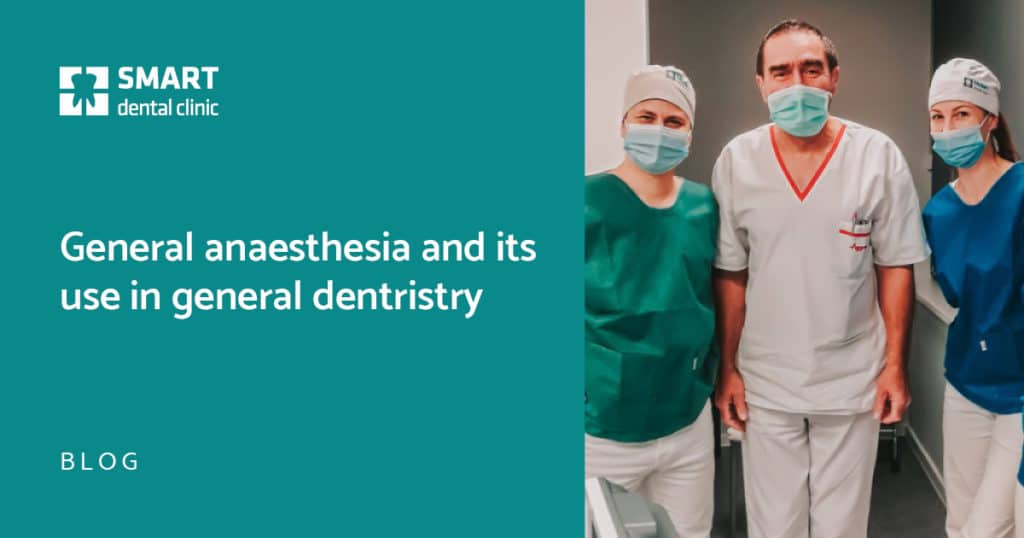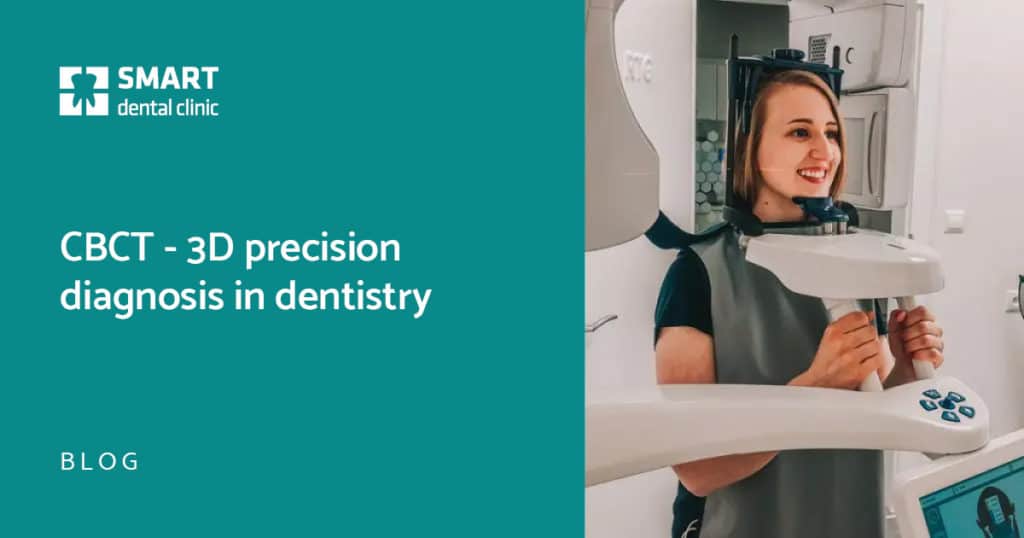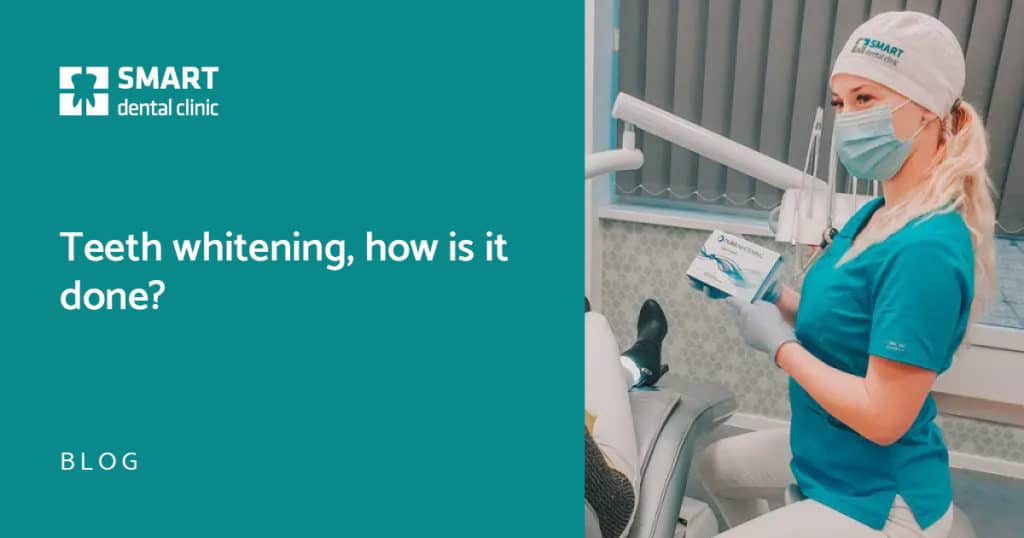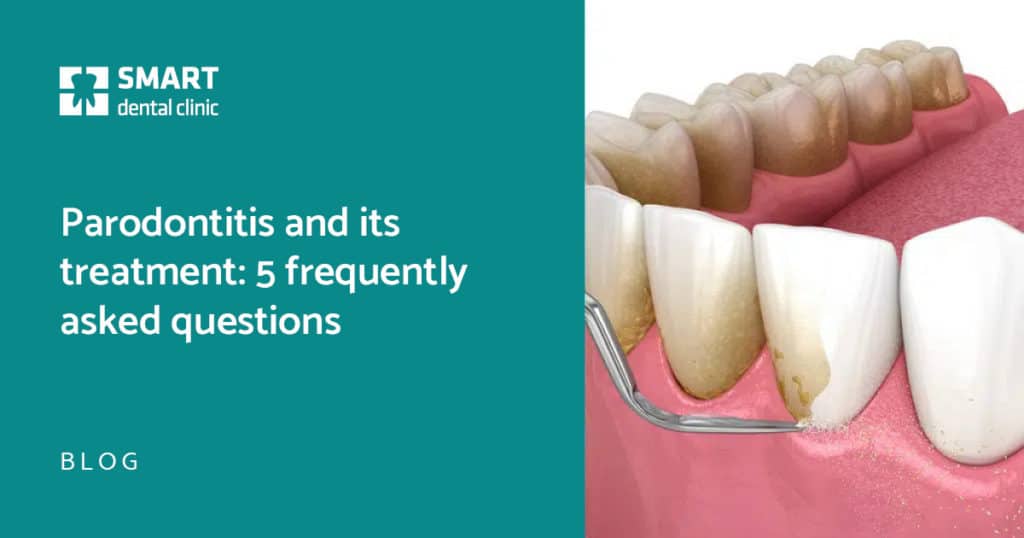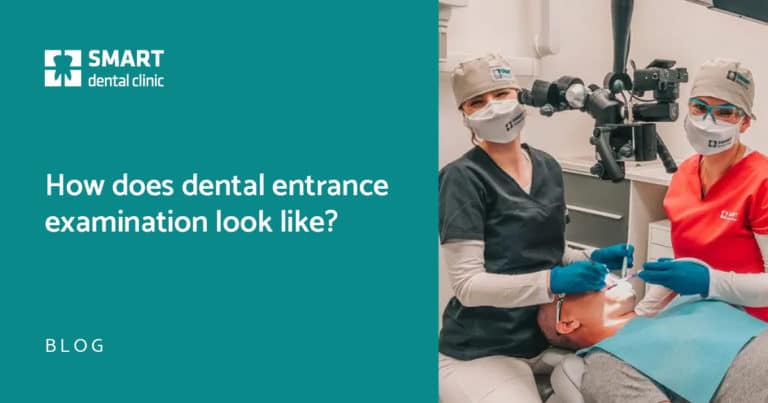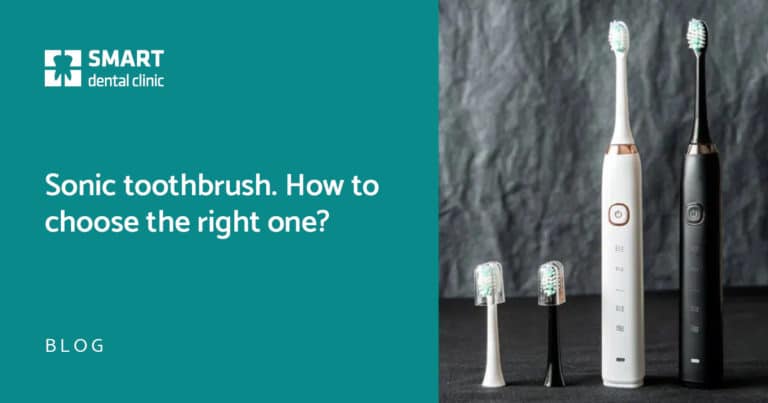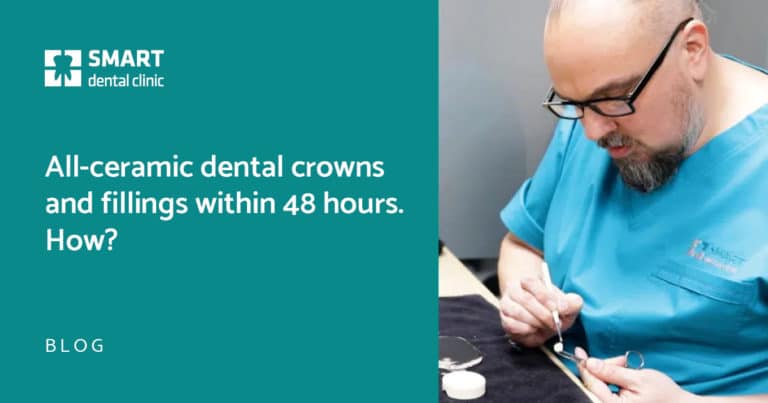Content of the article:
What is parodontitis (periodontitis)?
Periodontitis or parodontitis? Is there a difference? While periodontitis is one of the more outdated, folk names, parodontitis is the scientific name of the condition.
Parodontitis is a chronic inflammatory disease of the dental suspension tract (the ligamentous tissue connecting the tooth root surface to the alveolar bone, the alveolar bone itself and the gum) and is currently the most common reason for tooth loss in adulthood.
Gingivitis occurs relatively frequently and usually without significant subjective manifestations. We can observe sensitivity or bleeding of gums while brushing. When this inflammation reaches other suspension parts of the tooth – the so-called periodontium – we talk about parodontitis (colloquially “periodontitis”).
Parodontitis is caused by bacteria that are behind the resorption (loss) of the bone surrounding the tooth, which leads to increased wobbling of the tooth. Advanced disease may progress all the way to tooth loss.
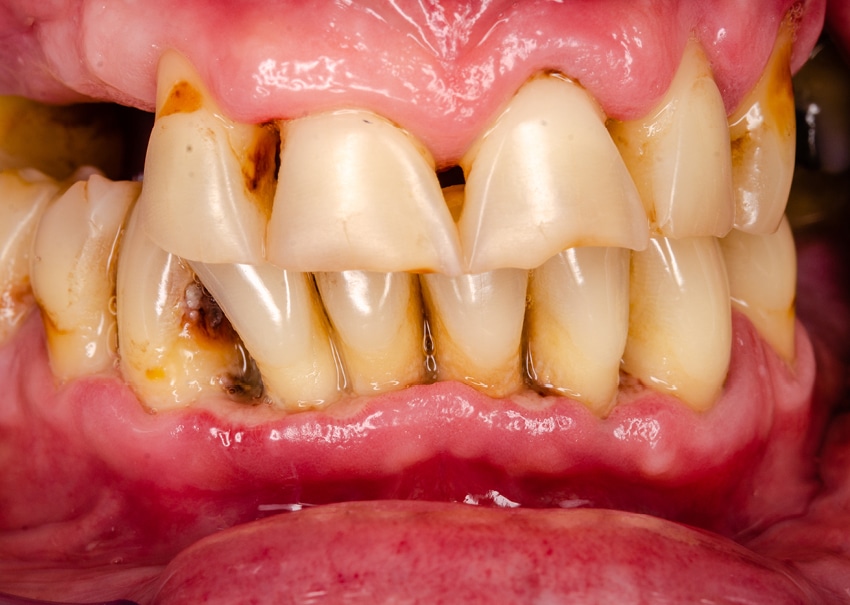
What are the parodontitis symptoms?
In its early stages, parodontitis is painless. The following symptoms may indicate a disease of the dental suspension apparatus:
- swollen and red gums,
- bleeding gums (especially when brushing your teeth),
- sensitive dental cervices,
- receding gums (visibly exposed dental cervices),
- bad breath,
- wobbly teeth.
How does parodontitis originate?
In its early stages, parodontitis is completely painless, and may, therefore, remain undetected for a long time. Regular check-ups at the dentist's are very important, as they can also detect early stages of inflammation.
The main cause of gingivitis is dental plaque. Dental plaque is largely formed by bacteria, which together form the so-called biofilm – one feels as if they have teeth covered with “slime”. Microorganisms in the dental plaque may cause inflammation of the gums. The risk of developing this inflammation is increased in smokers.
The dental plaque itself is soft and can be removed by thoroughly brushing the teeth. If the dental plaque is not removed, it hardens over time due to the minerals that are deposited in it, and thus tartar is formed. Dental tartar encourages deposition of dental plaque in the area of the gums and exposed teeth cervices up to the area of the bone around the tooth. Space is created between the root of the tooth and the gum that is ideal for further bacterial proliferation.
If the disease is not treated professionally at this stage, the inflammation continues and the spaces become larger. The result is a loss of both ligamentous fibers anchoring the tooth to the bone and the bone itself. The teeth gradually “stop holding” in the jaw and become loose.
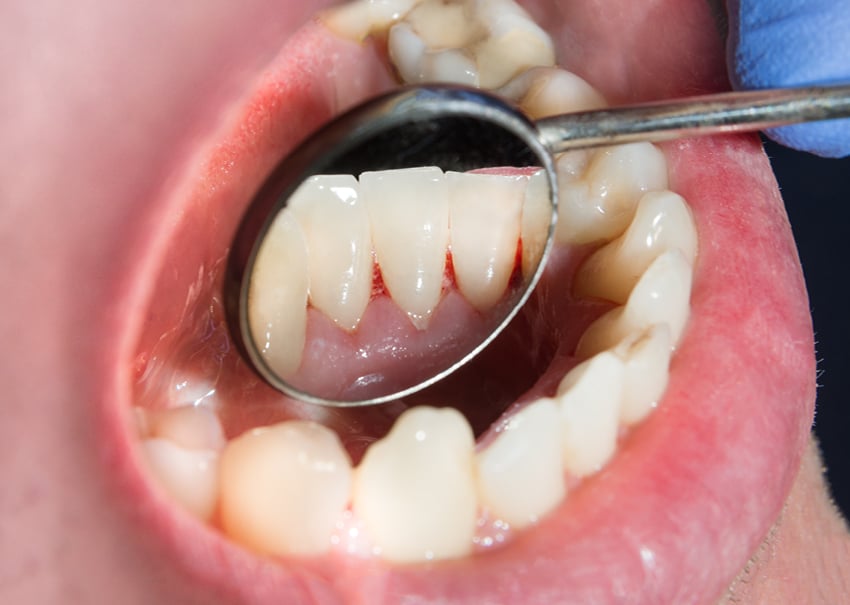
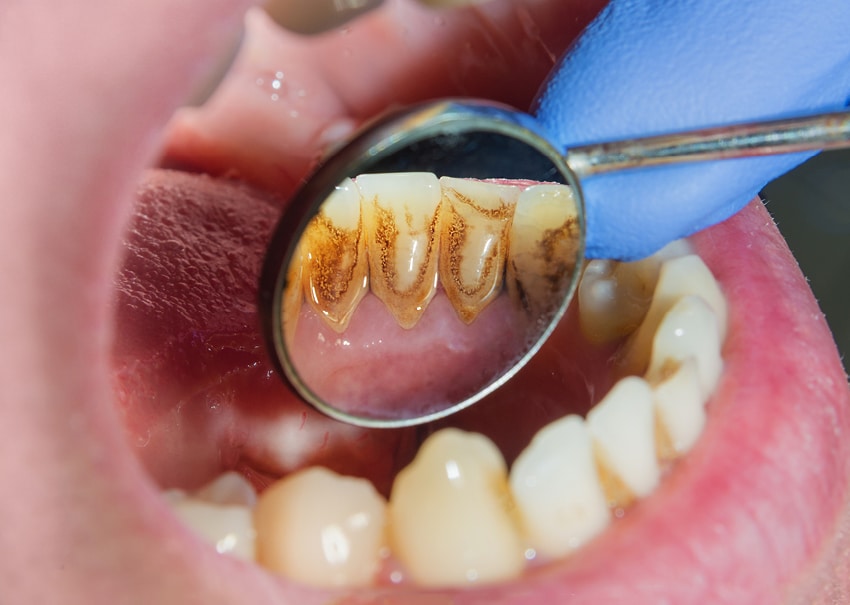
How is parodontitis treated?
Scaling, also called curettage, is one of the procedures for treating parodontitis.
Treatment of parodontitis is a long-term process aimed at stopping the gradual destruction of the suspension apparatus of the tooth (periodontium). Bone resorption, which occurs in this disease, may lead to tooth loss when left untreated.
Scaling is a conservative treatment of the periodontium, which consists of removing impurities and smoothing the surface of the root – the area below the gum level. To stop the infection, it is necessary to remove impurities such as tartar and aggressive bacteria (parodontopathogens) stored in the plaque under the gum.
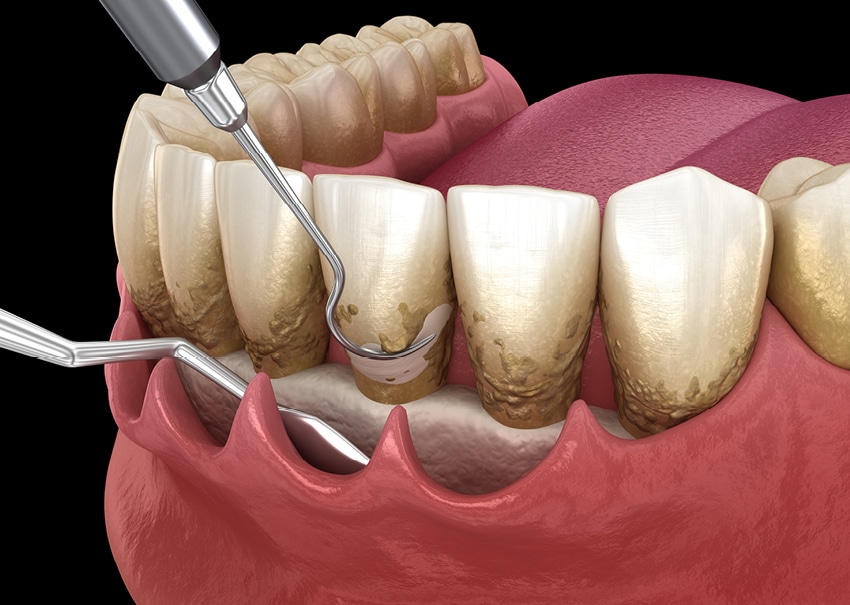
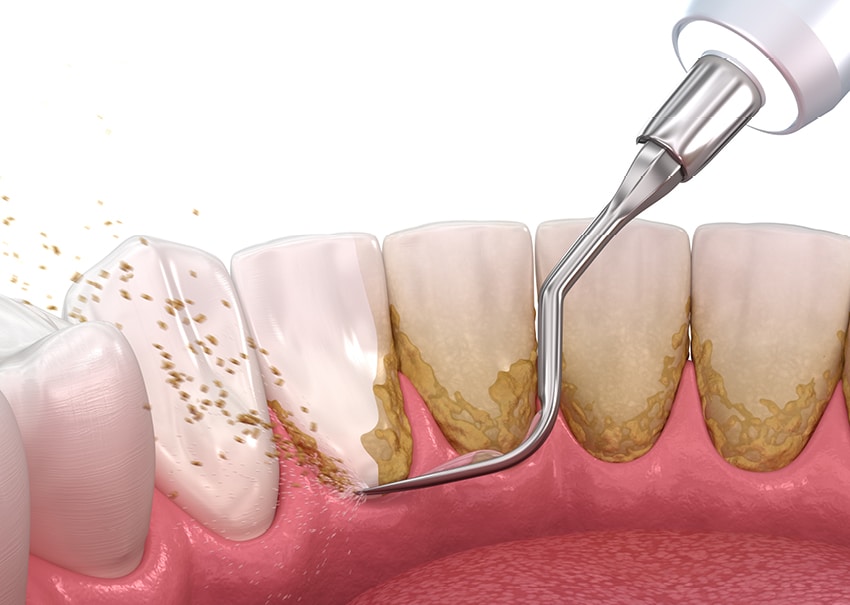
What does the curettage procedure look like?
- This procedure takes place under local anesthesia and is somewhat time consuming. The course depends on the extent of parodontitis.
- It is performed by a dentist or a dental hygienist. The aim of scaling is the above-mentioned stopping of infection and parodontitis stabilization.
- The scaling is followed by a tissue healing phase, which can last 2-3 months and the desired result is a complete reduction of periodontal sacs (pathological spaces between the tooth, gum and the bone).
- The patient may observe more exposed dental cervices during the tissue healing phase, resulting from receding swelling and hardening of the gums around the teeth.
Maintenance stage
Post-scaling teeth can be sensitive, painkillers may be used if the sensitivity is high, chlorhexidine rinses are also suitable to accelerate healing.
Scaling is followed by a parodontitis maintenance phase, which consists of regular professional dental hygiene and regular removal of impurities from the surface of the teeth to prevent reinfection.
In order to maintain a satisfactory state of the periodontium, it is also necessary to maintain excellent individual patient hygiene routine, which is designed by a dental hygienist according to the patient’s needs.
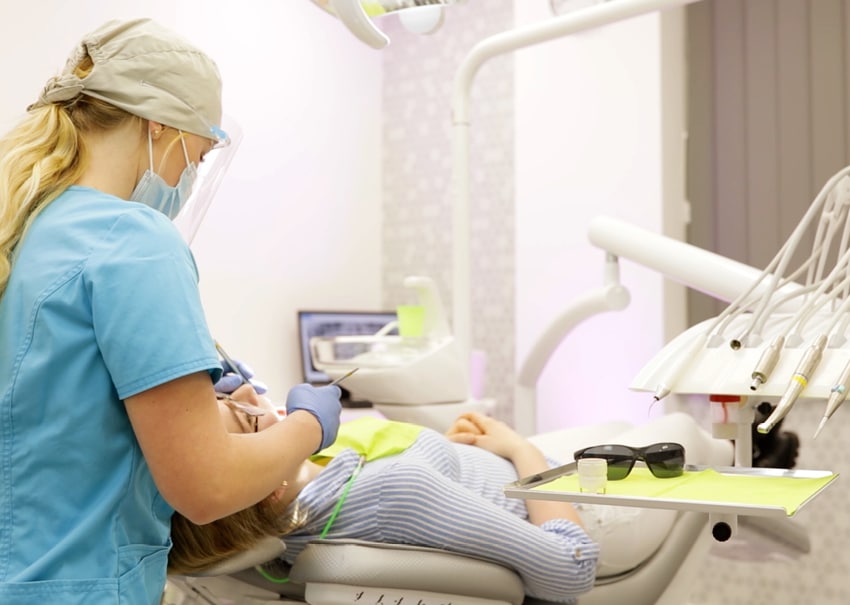
Treatment of parodontitis at Smart Dental Clinic
DID THE ARTICLE RESONATE WITH YOU?
BOOK AN EXAMINATION TODAY!
-
Single jaw curettage 80 €
-
Dental hygiene with sandblasting and instruction 85 €
-
Sandblasting (airflow) 55 €

MDDr. Dana Václaviková
Dentist, Bratislava











